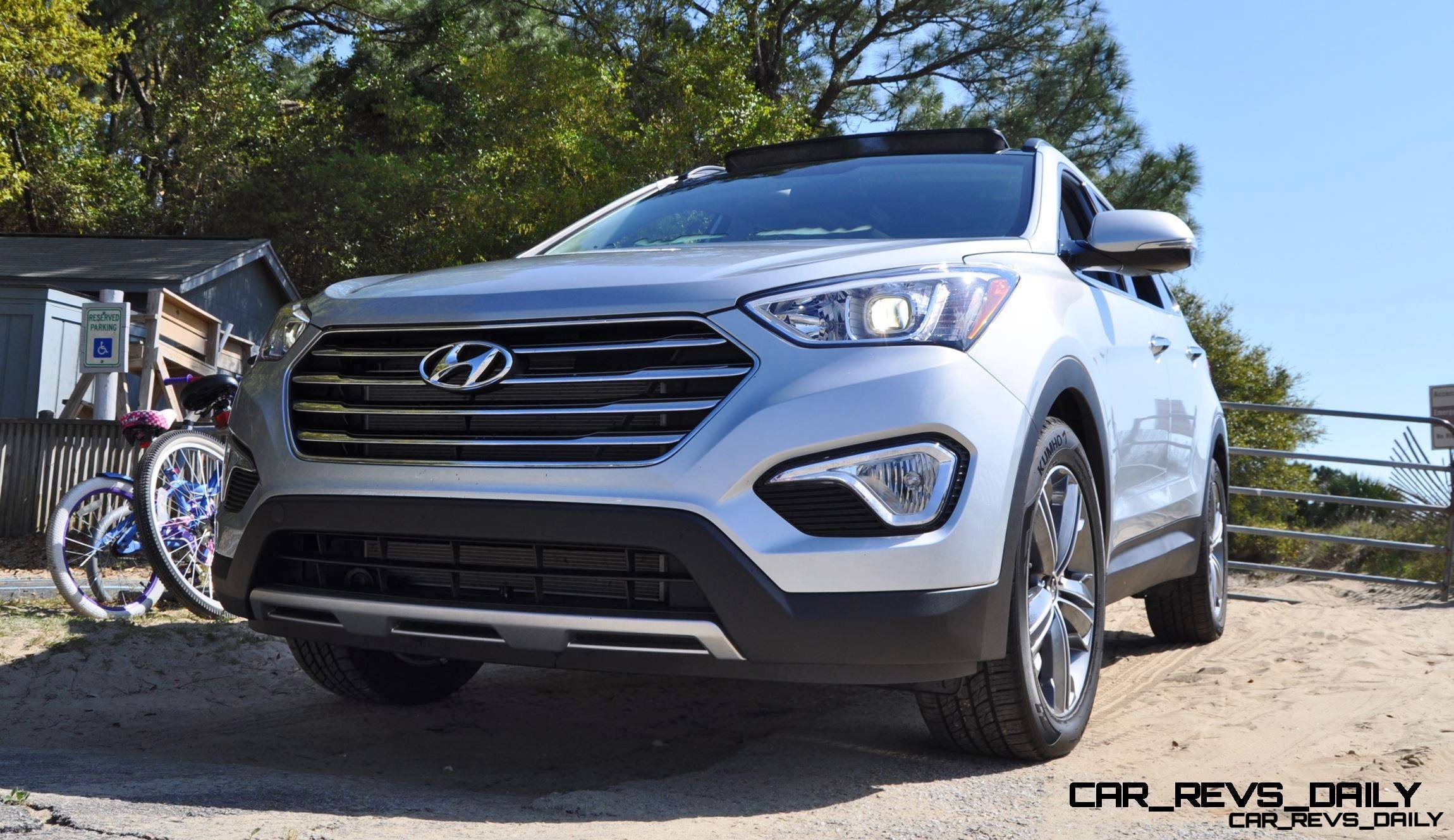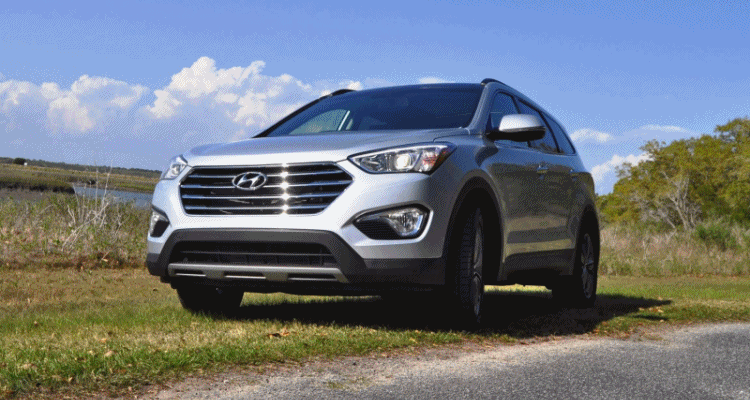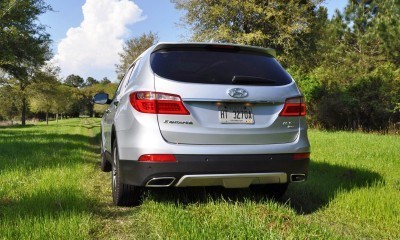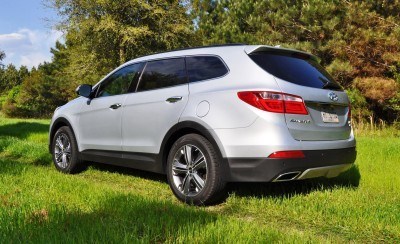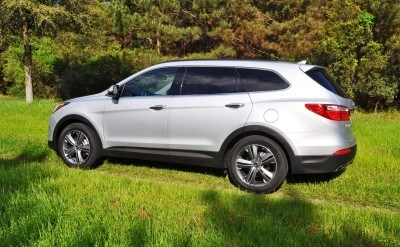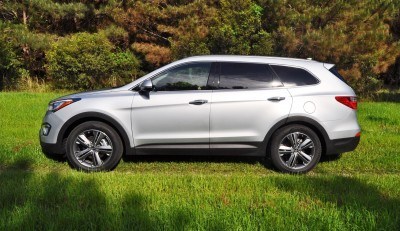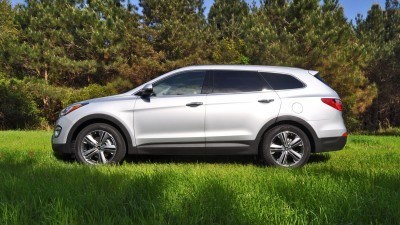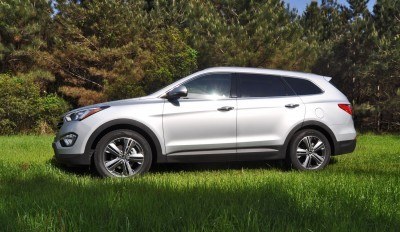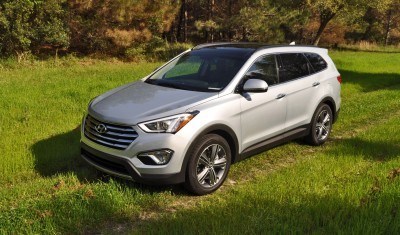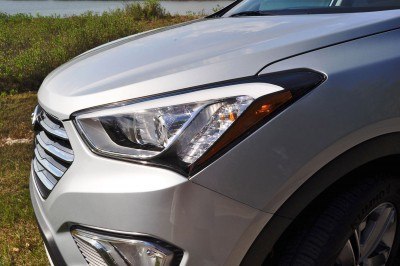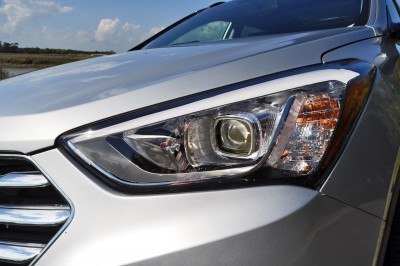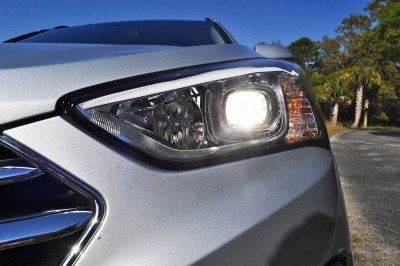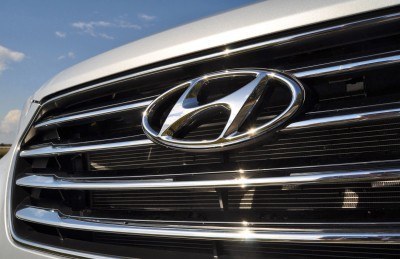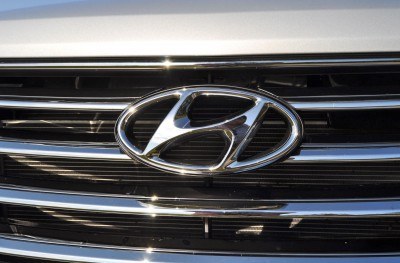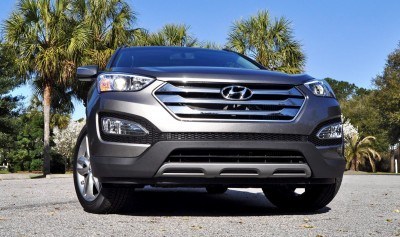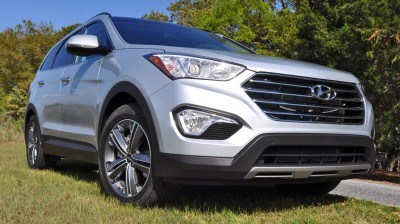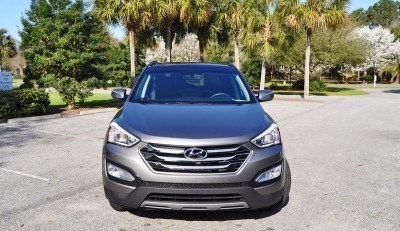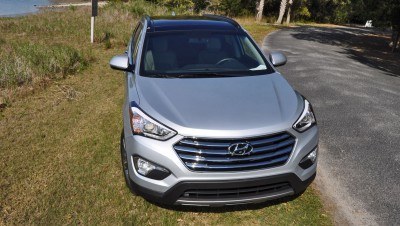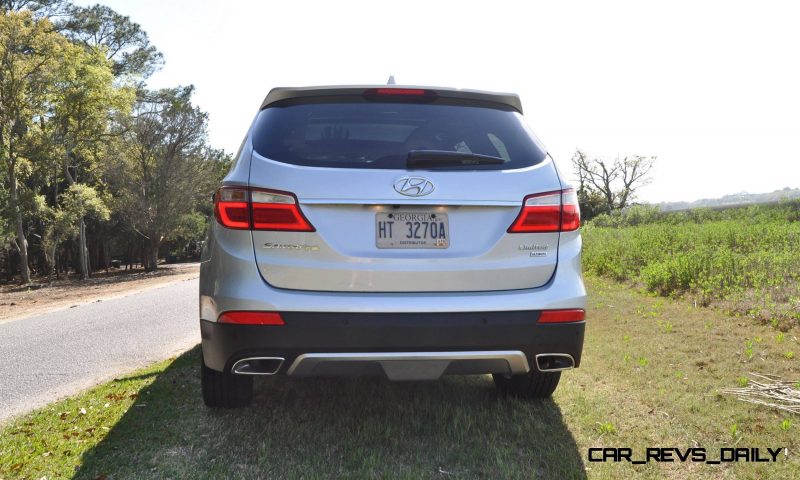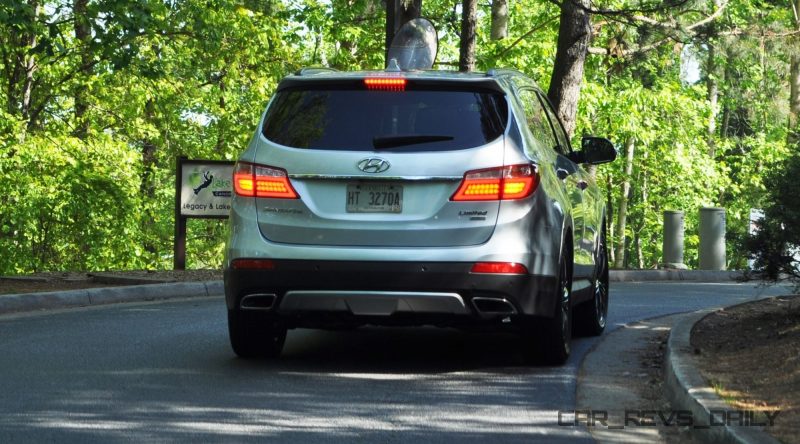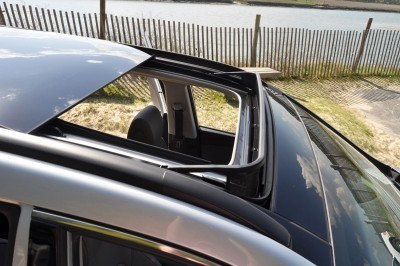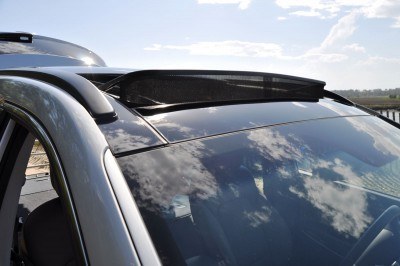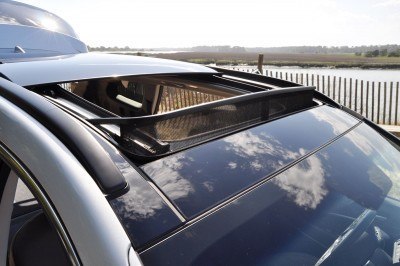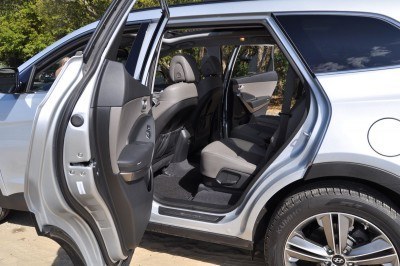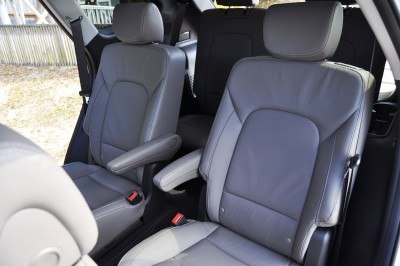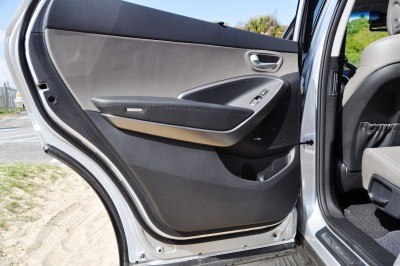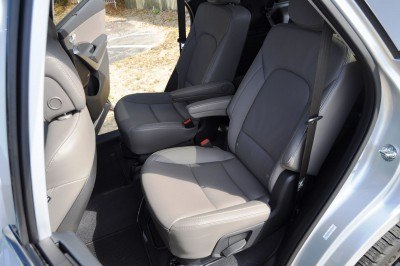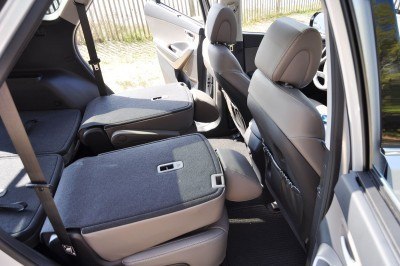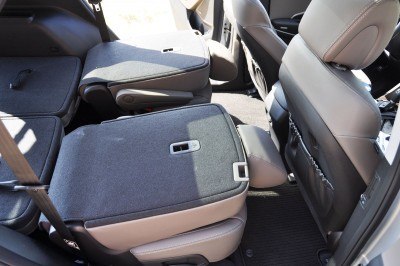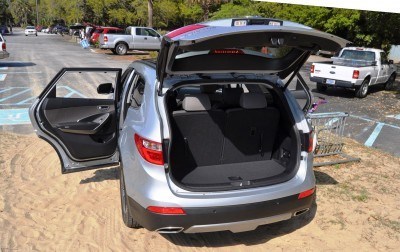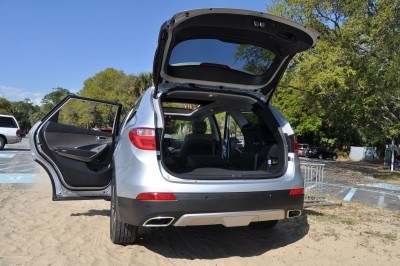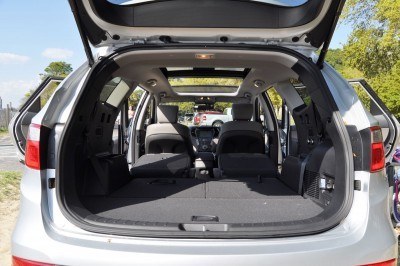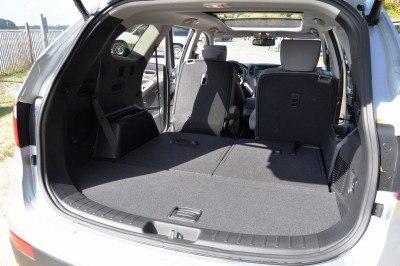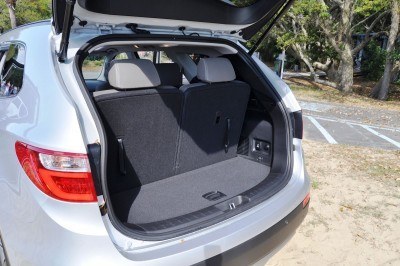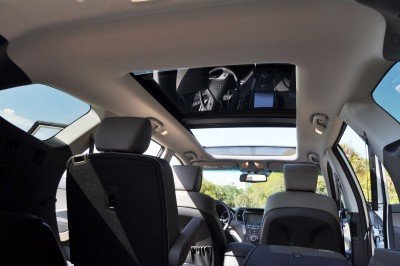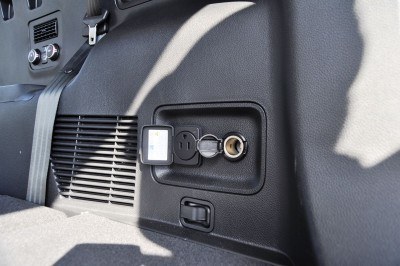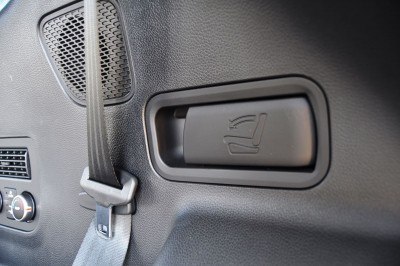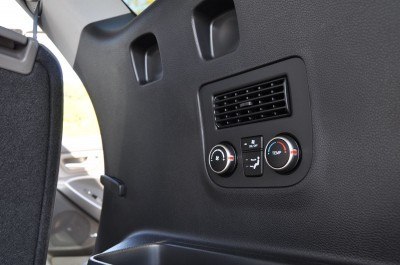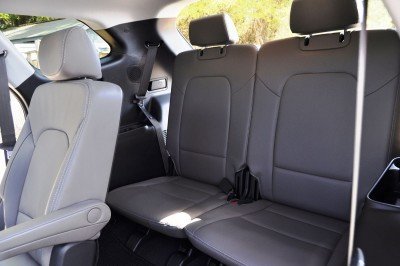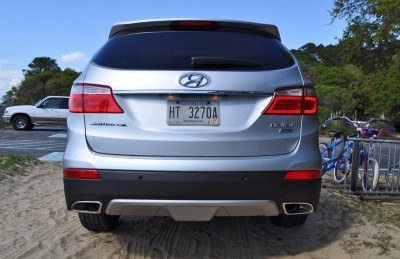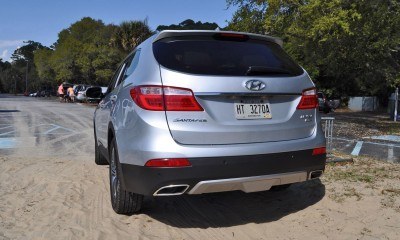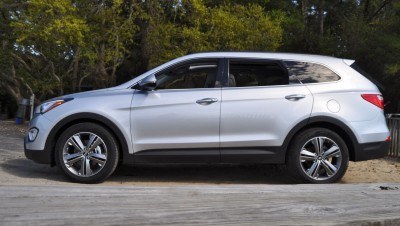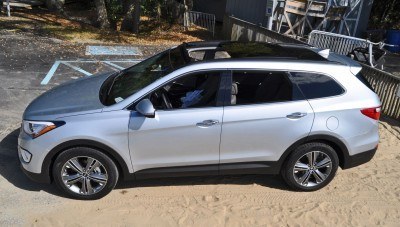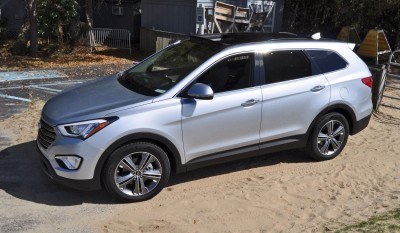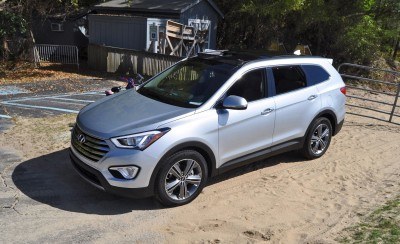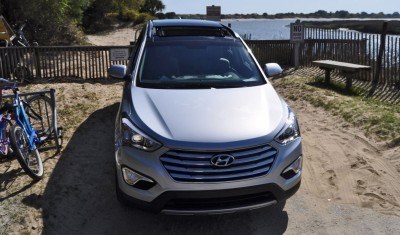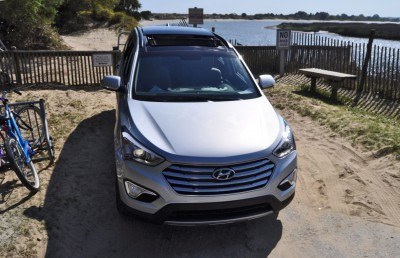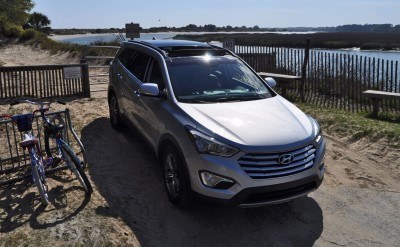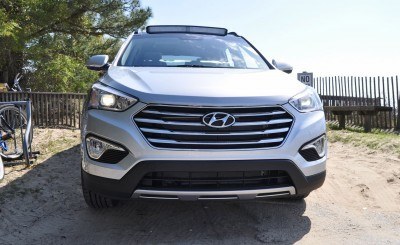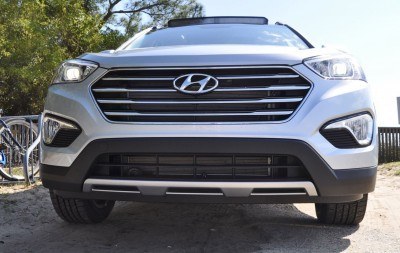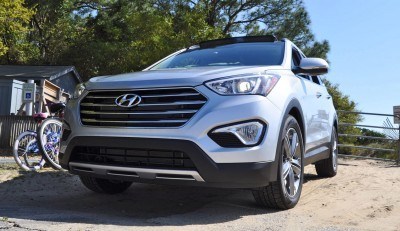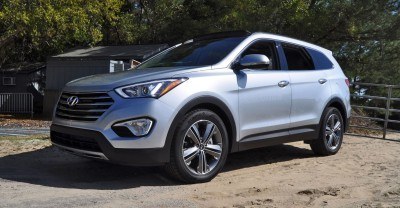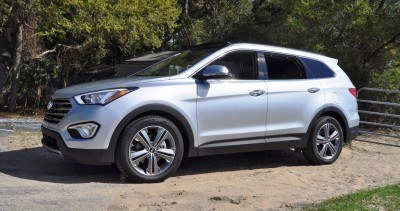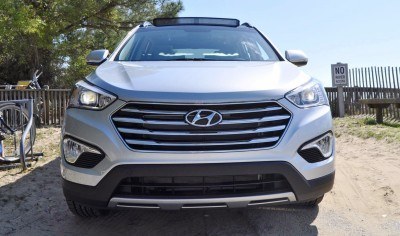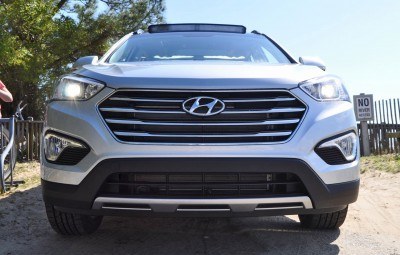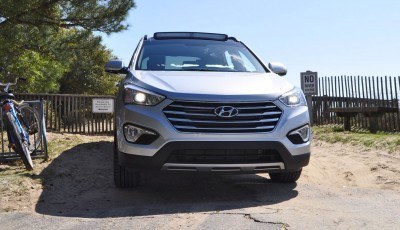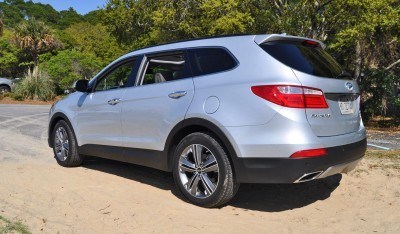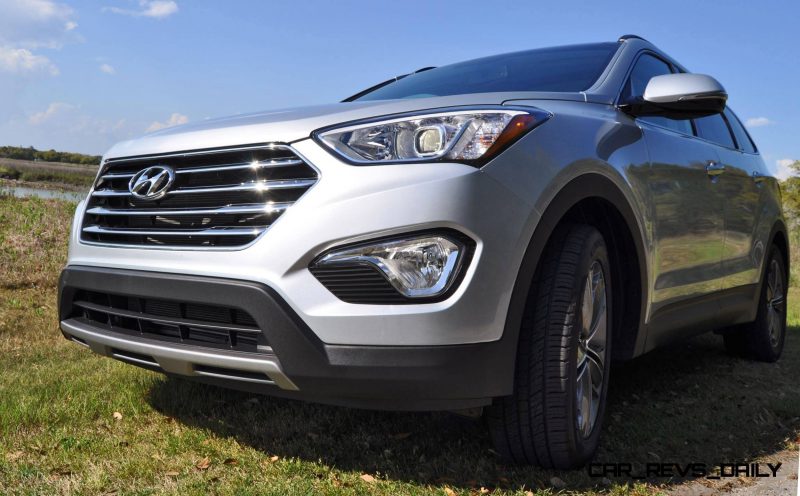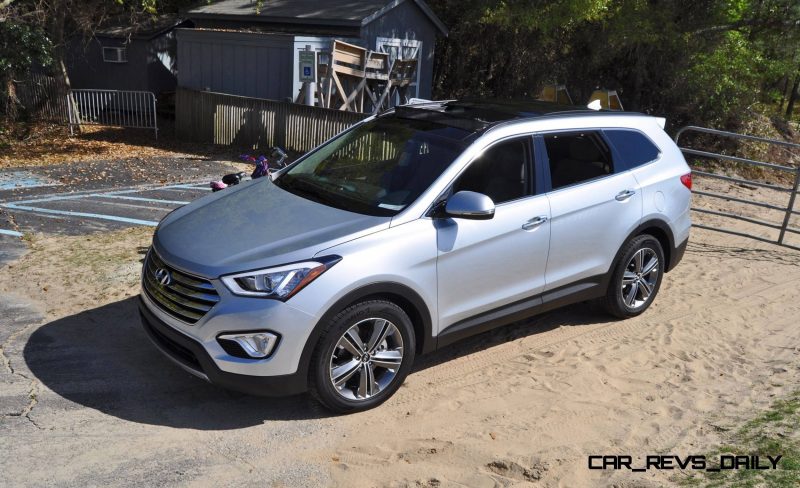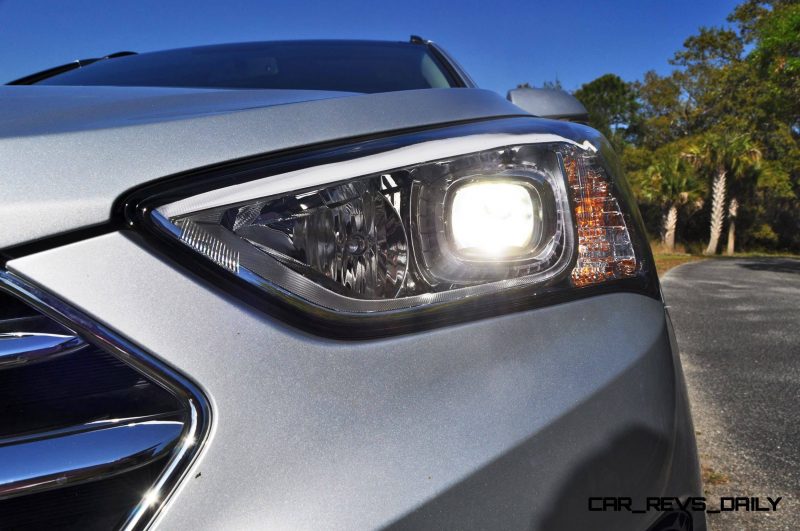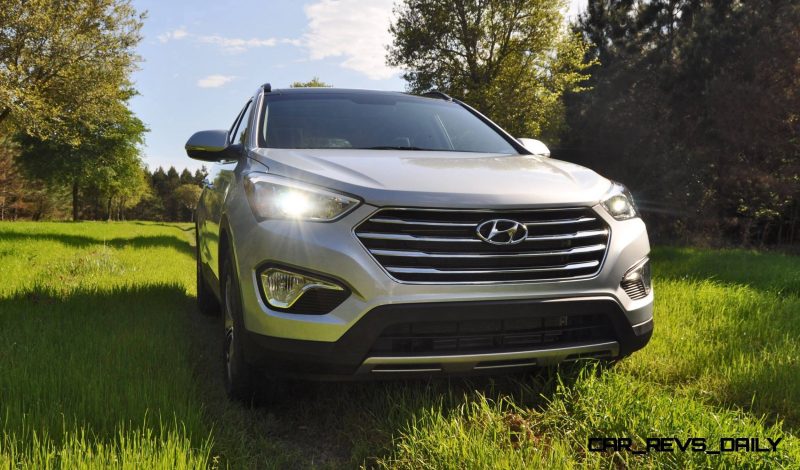 The seven-seat crossover market is a cut-throat place for carmakers. These fairly wealthy families are the bulls-eye for more than three dozen unique SUV models in 2015 — and earning big sales and market share is extremely difficult for even the best new machines.
The seven-seat crossover market is a cut-throat place for carmakers. These fairly wealthy families are the bulls-eye for more than three dozen unique SUV models in 2015 — and earning big sales and market share is extremely difficult for even the best new machines.
With so many choices, three-row SUVs have become the new wild west of the car biz. Explorer vs Highlander becomes the modern equivalent of a pistol duel at high noon.
As such, Hyundai threw a huge amount of resources at its redesigned 2015 Santa Fe — thinking through every step of the consideration and ownership process to make a top-flight crossover that rises to the top of the class.
We’ve spent time recently in two loaded Santa Fe models: the Sport 2.0 Turbo and this, the LWB Ultimate with a 3.3-liter V6. Both were front-drive and both are immediately impressive outside and in.
This larger Santa Fe is the real breadwinner of the family. If only one were to survive a deathmatch, the LWB would be it — simply because it has that must-have third row. [In fact, the LWB description is just added for clarity here. This is simply the Santa Fe. It is the Polo that sets the tone for Polo Sport, if you will.]
Although the Sport and the LWB share name and over half their components, they really are two vastly different trucks. If the Santa Fe Sport and its $33,000 price aims at the Nissan Murano and Lincoln MKC, the Santa Fe has its sights set on the Audi Q7 or BMW X5.
Bottom line? Hyundai has lofty goals for the 2015 Santa Fe.
How does the truck deliver on its mission of Audi-like tech and cabin comfort, but with pricing that starts at $30k?
Read on to find out! Standard structure here of Exterior, Interior, Performance, Pricing and Summary. We also have a ‘Scorecard’ at the end of the review.
EXTERIOR
The clearest difference between the two Santa Fe models is the windowline: the Sport has a sharp upkick from the rear doors, while the LWB continues the glass just above the beltline all the way back. The other key difference, of course, is length: the LWB has a four inch longer wheelbase and an overall length pushing 8.5-inches longer.
But despite many shared design elements and even exact components, the Santa Fe twins are definitely not identical. The fraternal pair might share its headlamps, but the rest of the cars are actually quite different. They have unique noses and tails, unique door sizes, roof size, tailgates… etc. Actually, summarizing what is shared is far easier: the headlamps and the first row of seats.
The Sante Fe LWB Ultimate here has trim-exclusive LED taillamps and dark grey metallic for its alloy wheels. It is a really good-looking SUV, with premium details like the lowerbody fascias closely recalling the BMW X5. The overall proportions and scale of the Santa Fe LWB are near identical to the Audi Q7.
The lines are far more premium than the Toyota Highlander or Nissan Pathfinder, to say nothing of the somewhat downmarket Chevrolet Traverse and Dodge Durango.
There are two places we think the Santa Fe could be better, however. The LED lighting solution up front is not great. There is no way to have the LED accent on the top of the lamp illuminated by itself. It is either no lights, all lights on, or the white LED running light + highbeam as the DRL. It looks far less cool than it should.
Also in the lamp area, the projector beams are squared-off in a cool way — and provide great light on the road. But they are a yellower hue than the LED above them, as well as the highbeam DRL.
Last place where the style underwhelms is down below. Those X5-like plastic shrounds around the lower bumpers and all fenders are nice, but there is a reason the loaded X5’s are fully painted: it looks twice as nice. The lower cladding of the Santa Fe would look much nicer if it were painted body-color.
INTERIOR
The cabin of the Santa Fe is absolutely fantastic. You immediately feel special and classy as you slip onto the leather drivers seat. Power controls galore, a jumbo nav/infotainment screen, and premium materials at every touch point.
The moonroof of this Ultimate Santa Fe is the largest we have ever seen on a production car. It literally extends from the windshield header all the way to the tailgate spoiler. Only the front third opens, but it is the cool slide-above glass panel type. Very cool. The wind deflector deploys and keeps the air inside calm even at highway speeds.
A power sunshade is a full blackout with one-touch power controls — making this nicer than the dotted screen shade of the Q7.
In fact, the cabin of the Santa Fe is simply better than the 2015 Q7. Yes, the new Q7 is coming very soon — but even so, for any Hyundai to deliver the ultra-high-quality and stylish execution of the Audi flagship is quite impressive. The Q7’s climate, stereo and nav system are virtually incomprehensible versus the easy Hyundai. The Audi does have Google Earth 3D satellite maps, but the screen is teeny-tiny.
In the second row, captains chairs are nicely elevated with great room all around. They slide and fold for third row entry, where the room is near class best for wayback passengers. Still plenty of glass back there all around, with a third set of climate knobs and vents just for the third row folks. Second class citizens no more!
Gripes?
The seat base adjustment does not go low enough to the floor to get into truly sporty position, and there is some wind noise around the side mirrors at highway speeds.
A new Saddle leather trim caps off the Santa Fe price lists — and looks worth it. This grey leather feels nice but is a bit shiny and slippery versus true luxury cars, whose hide is thicker-feeling. Last note: lateral support around corners is not class-best.
Otherwise, solid A-grade for this cabin. Very posh but useful.
LWB vs Sport – Key Element Comparison
Santa Fe LWB |
Santa Fe Sport |
|
| Base drive wheels | FWD | FWD |
| Base drive engine | 3.3-liter V6 | 2.4-liter I-4 |
| Optional drive wheels | AWD | AWD |
| Optional drive engine | None | 2.0-liter Turbo I-4 |
| Base Pricing | 29800 | 24950 |
| Optional Turbo Base Price | V6 Only | 30650 |
| Standard Seating | 7 | 5 |
| Third Row? | Yes | No |
| Second Row Legroom | 41.3 in | 39.4 in |
| SAE passenger volume | 146.6 cubic ft. | 108.0 cubic ft. |
| Total interior volume | 160 cubic ft. | 143.4 cubic ft. |
| SAE cargo volume – Behind front seats (est.) | 80.0 cubic ft. | 71.5 cubic ft. |
| Wheelbase (in.) | 110.2 | 106.3 |
| Total Length (in.) | 193.1 | 184.6 |
| SAE cargo volume – Behind 2nd row seats (est.) | 40.9 cubic ft. | 35.4 cubic ft. |
| SAE cargo volume – Behind 3rd row seats (est.) | 13.5 cubic ft. | N/A |
PERFORMANCE
The Santa Fe LWB comes with a 3.3-liter V6 as standard in its $30,000 GLS base trim and the Limited/Limited Ultimate of the test car. This 290-horsepower engine sounds great and loves to rev — which is always somewhat surprising for a family crossover.
Just 252-pound-feet of torque mean it does need some revs to move around quickly, mind you.
The big engine helps most in full-car trips or when towing, when the LWB can haul 5,000 pounds vs the Sport’s 2,000 pounds. Big difference there.
The biggest dynamic differences between the Sport and LWB are immediately clear in a full-throttle launch or with heavy gas around a corner. Where the Sport rides more level in these scenarios, the LWB has more movement. Particularly in the trunk area. You have a sense of squat on throttle that is not present in the Sport.
Neither Santa Fe loves hard cornering, but they do have good steering precision around town and on the highway. There is some nervousness in the rack at straight-ahead on country two-lane roads, but overall much better than ever for a Hyundai SUV. The test trucks were front-drive, with mild torque steer when really hammering it. Three settings of Comfort, Normal and Sport for the rack are all pretty good, with the difference mainly the effort needed. Sport is heavier while Comfort makes it finger-tip easy.
In the crossover ranks, the Santa Fe trails the BMW X5 dramatically but is as composed as the Q7 — which also does not much enjoy being hustled. The Toyota Highlander feels more confident on first drive, with more control to the helm. We’d love to sample the AWD Santa Fe’s to see any differences in the dynamics — but overall the Santa Fe scores just a B on the Perfomance tally.
PRICING
The Santa Fe is a great value. With the Ultimate pack including everything you might want for $4,000, the truck came in just below $40,000. This compares very well to the Ford Explorer, which can touch $53,000 these days. The Hyundai is fancier than the V6 Highlander outside and in, which mirrors the Santa Fe pricing almost dollar for dollar.
Considering the Santa Fe LWB Ultimate’s equipment and cabin premium-ness, we give it an A for Value.
2015 Hyundai Santa Fe Pricing
Santa Fe GLS FWD |
$30,150 |
Santa Fe GLS AWD |
$31,900 |
Santa Fe Limited FWD |
$34,250 |
Santa Fe Limited FWD – Saddle Interior |
$34,250 |
Santa Fe Limited AWD |
$36,000 |
Santa Fe Limited AWD – Saddle Interior |
$36,000 |
SUMMARY
Okay! Long review here for the long-wheelbase Santa Fe.
It is a really impressive SUV that makes room at the top of its class. You should definitely drive it before buying a Honda Pilot or any of the other competitors listed here.
The Audi-beating tech and comfort in all three rows of the Santa Fe is a huge selling point. There are places where we’d take the Santa Fe even further upmarket, and even sportier around corners.
But for this price level, the Santa Fe LWB Ultimate will make you and your family very happy campers indeed.
SCORECARD
Exterior |
B+ |
Interior |
A |
Performance |
B |
Value |
A |
Total |
A- |
TECH SPECS COMPARISON: LWB vs Sport
LWB |
SPORT |
|||||
| 2015 Hyundai | SANTA FE GLS | SANTA FE LIMITED | 2015 Hyundai | SANTA FE SPORT Base | SANTA FE SPORT 2.0T | |
| Exterior Dimensions | Exterior Dimensions | |||||
| Wheelbase | 110.2 in. | 110.2 in. | Wheelbase | 106.3 in. | 106.3 in. | |
| Overall length | 193.1 in. | 193.1 in. | Overall length | 184.6 in. | 184.6 in. | |
| Overall width | 74.2 in. | 74.2 in. | Overall width | 74.0 in. | 74.0 in. | |
| Overall height (with roof rack) | 66.5 in. (66.9 in.) | 66.5 in. (66.9 in.) | Overall height (with roof rack) | 66.1 in. (66.5 in.) | 66.1 in. (66.5 in.) | |
| Wheel Tread, front | 64.1 in. | 64.1/64.5 in.(18″/19″) | Wheel Tread, front | 64.3 in. | 64.1 in. | |
| Wheel Tread, rear | 64.5 in. | 64.5/64.5 in. (18″/19″) | Wheel Tread, rear | 64.7 in. | 64.5 in. | |
| Coefficient of Drag (Cd) | 0.34 | 0.34 | Coefficient of Drag (Cd) | 0.34 | 0.34 | |
| Interior Dimensions | Interior Dimensions | |||||
| Head Room (with sunroof) | Head Room (with sunroof) | |||||
| Front | 39.6 in. (38.2 in.) | 39.6 in. (38.2 in.) | Front | 39.6 in. (38.2 in.) | 39.6 in. (38.2 in.) | |
| 2nd row | 39.4 in. (38.3 in.) | 39.4 in. (38.3 in.) | 2nd row | 39.1 in. (37.4 in.) | 39.1 in. (37.4 in.) | |
| 3rd row | 35.7 in. (35.7 in.) | 35.7 in. (35.7 in.) | ||||
| Leg room | Leg room | |||||
| Front (MAX) | 41.3 in. (44.1 in.) | 41.3 in. (44.1 in.) | Front (MAX) | 41.3 in. (44.1 in.) | 41.3 in. (44.1 in.) | |
| 2nd row | 41.3 in. | 41.3 in. | 2nd row | 39.4 in. | 39.4 in. | |
| 3rd row | 31.5 in. | 31.5 in. | ||||
| Shoulder room | Shoulder room | |||||
| Front | 59.4 in. | 59.4 in. | Front | 59.4 in. | 59.4 in. | |
| 2nd row | 58.6 in. | 58.6 in. | 2nd row | 58.3 in. | 58.3 in. | |
| 3rd row | 53.9 in. | 53.9 in. | ||||
| Hip room | Hip room | |||||
| Front | 56.7 in. | 56.7 in. | Front | 56.7 in. | 56.7 in. | |
| 2nd row | 55.4 in. | 55.4 in. | 2nd row | 55.4 in. | 55.4 in. | |
| 3rd row | 44.1 in. | 44.1 in. | ||||
| SAE passenger volume | 146.6 cubic ft. | 146.6 cubic ft. | SAE passenger volume | 108.0 cubic ft. | 108.0 cubic ft. | |
| Total interior volume | 160 cubic ft. | 160 cubic ft. | Total interior volume | 143.4 cubic ft. | 143.4 cubic ft. | |
| SAE cargo volume – Behind front seats (estimated) | 80.0 cubic ft. | 80.0 cubic ft. | SAE cargo volume – Behind front seats (estimated) | 71.5 cubic ft. | 71.5 cubic ft. | |
| SAE cargo volume – Behind 2nd row seats (estimated) | 40.9 cubic ft. | 40.9 cubic ft. | SAE cargo volume – Behind 2nd row seats (estimated) | 35.4 cubic ft. | 35.4 cubic ft. | |
| SAE cargo volume – Behind 3rd row seats (estimated) | 13.5 cubic ft. | 13.5 cubic ft. | ||||
Explore the Santa Fe and schedule a test drive over at the below link!
https://www.hyundaiusa.com/santa-fe-models/

Tom Burkart is the founder and managing editor of Car-Revs-Daily.com, an innovative and rapidly-expanding automotive news magazine.
He holds a Journalism JBA degree from the University of Wisconsin – Madison. Tom currently resides in Charleston, South Carolina with his two amazing dogs, Drake and Tank.
Mr. Burkart is available for all questions and concerns by email Tom(at)car-revs-daily.com.

